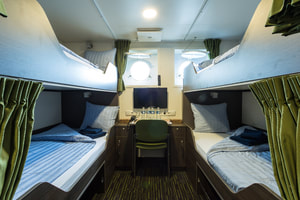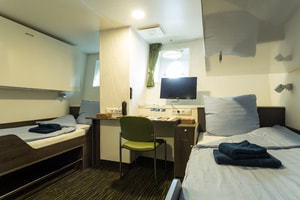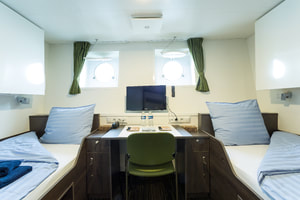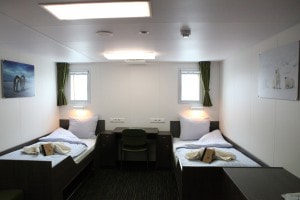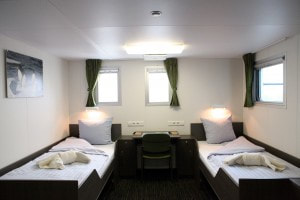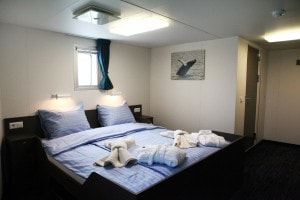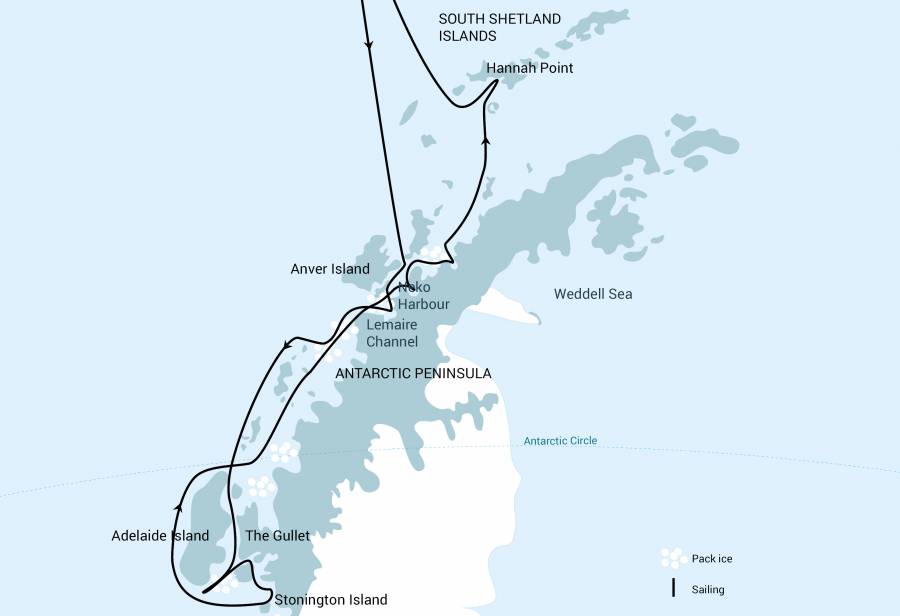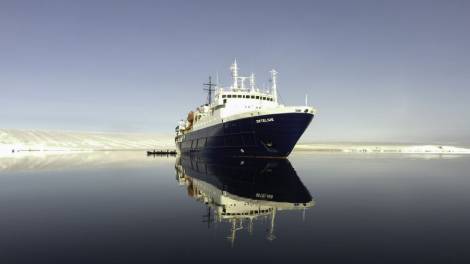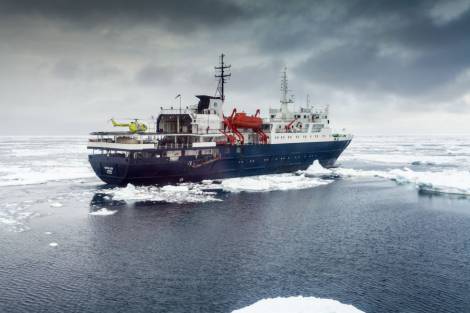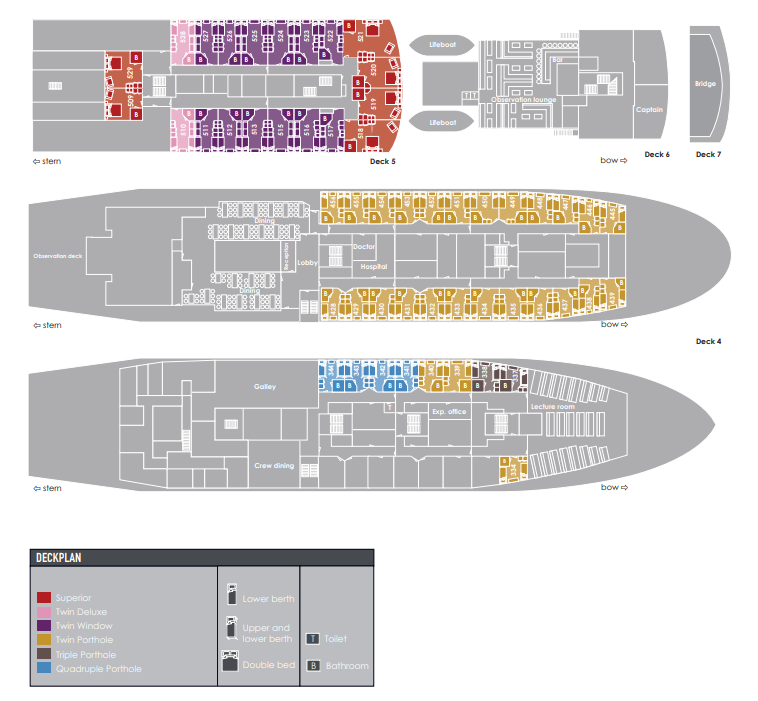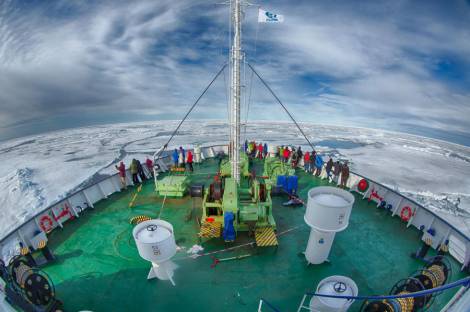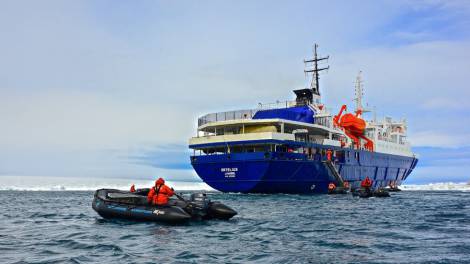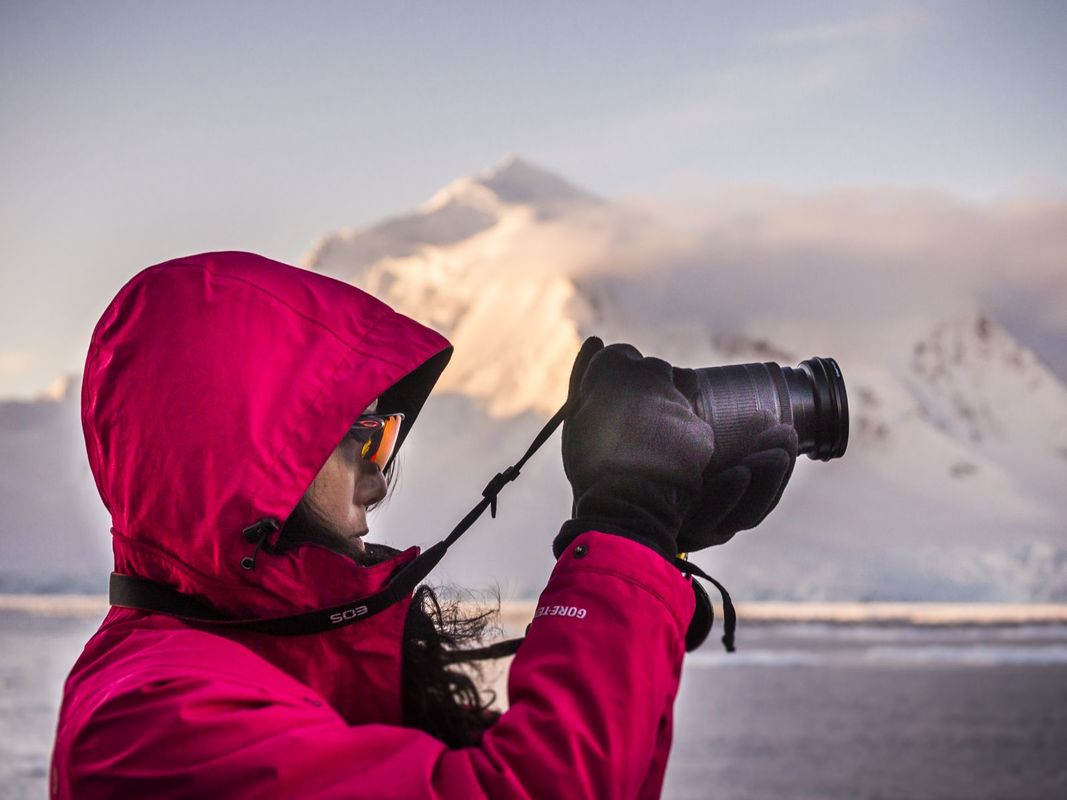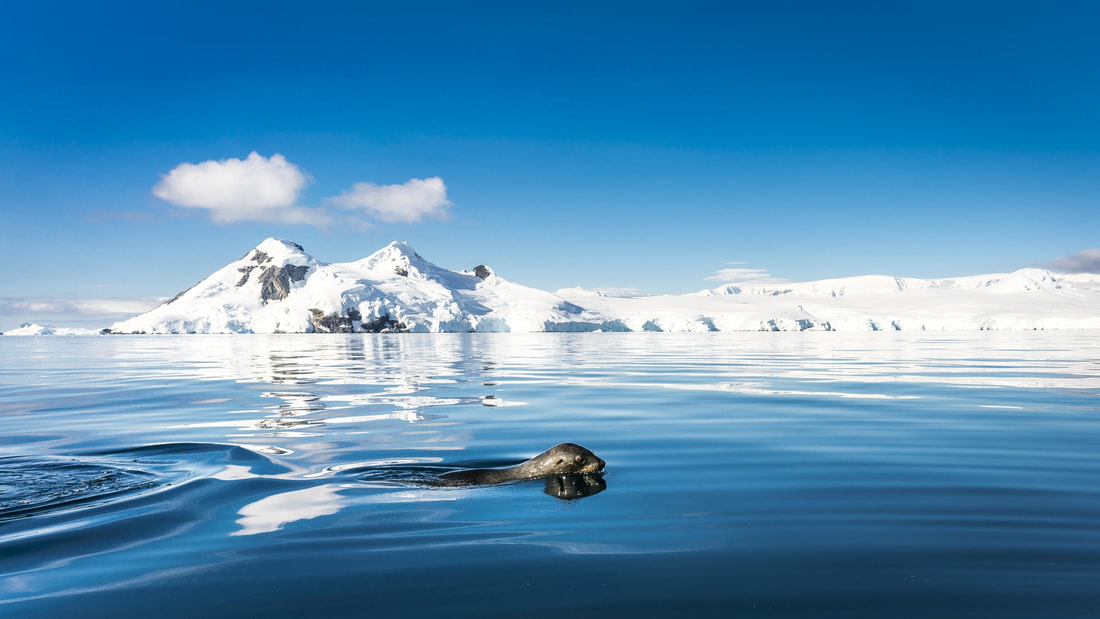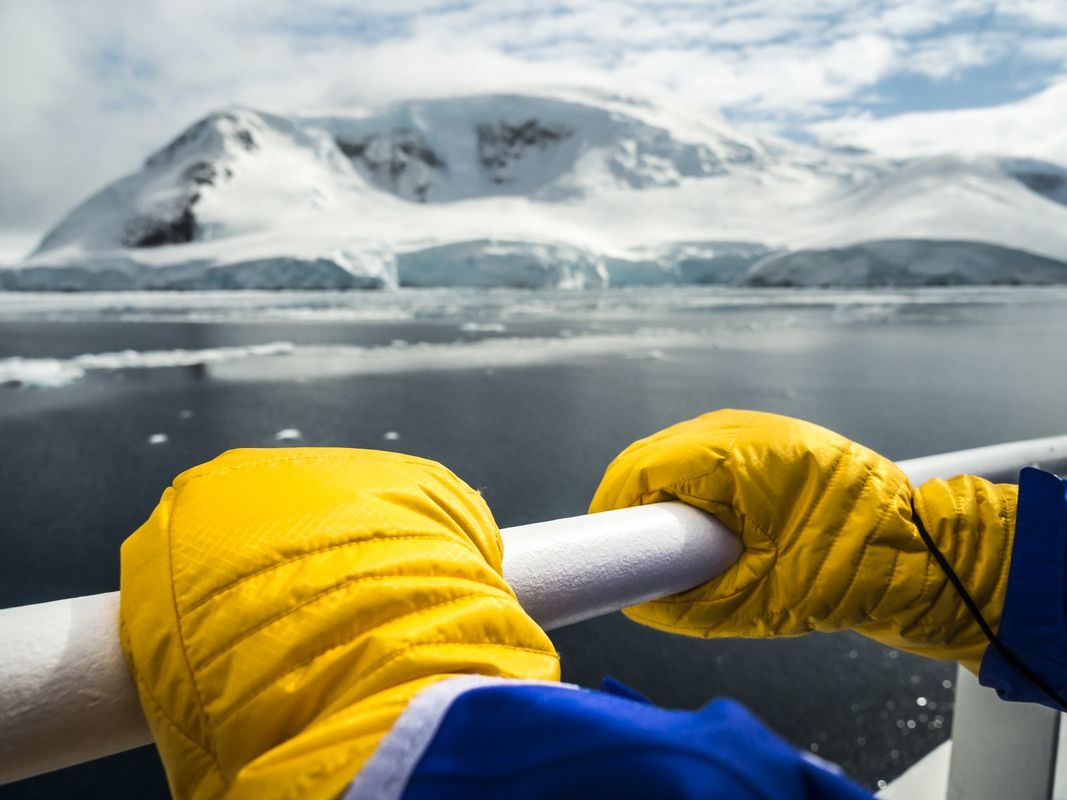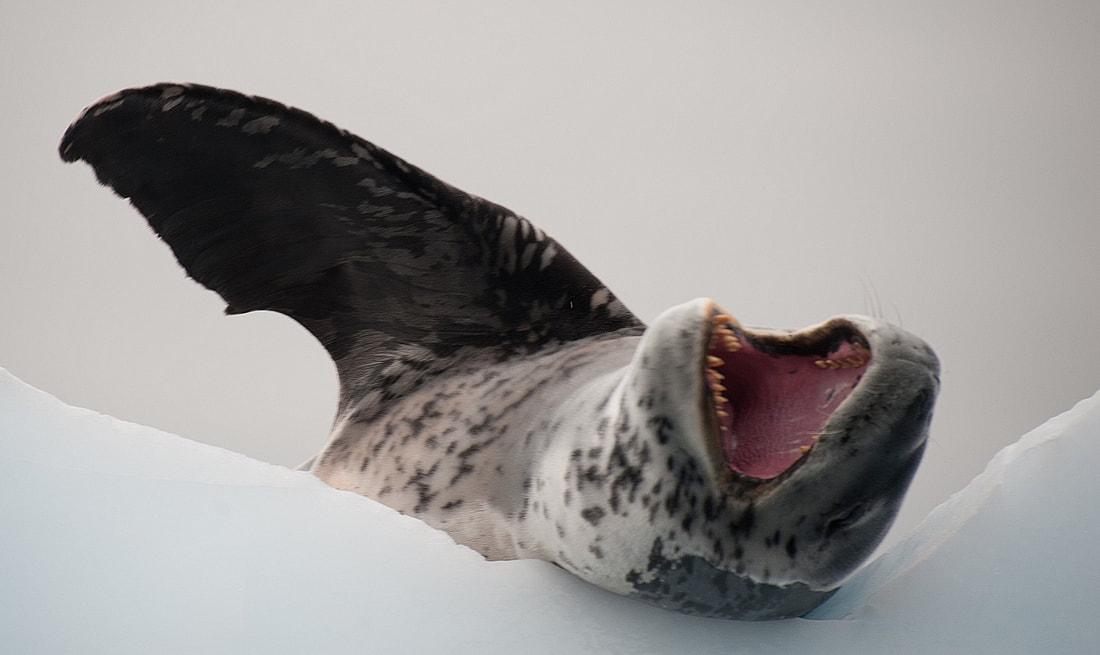Trip Planning
For those of us at Rockfish Divers who have been imaging this kind of trip for a long time (gazing at Mother Nature's most dramatic ice sculptures as big as sky scrapers shooting towards the sky, seeing the world's southern-most creatures against a stunning frigid backdrop, and diving along sheer walls of ice), it is beyond exciting to put these dreams into motion. Here are some of the important details for anyone looking to join this magnificent adventure.
|
Key Points
Dates: March 18-31 Duration: 14 days (13 nights) Ship: M/V Ortelius (more information below) Embarkation and Disembarkation: Ushuaia, Argentina Language: English speaking voyage Diving: This is an optional excursion for this trip (more details below), so this trip is open to everyone Hosts: Tyler from Rockfish Divers Booking Confirmation: Fly & Sea Dive Adventures will be coordinating all bookings for this adventure. You can complete the online booking form below, which also highlights the booking terms and conditions and are in addition to those outlined by the tour operator (Oceanwide Expeditions). |
Photos from Oceanwide Expeditions
|
Pricing
Please note that all prices listed below are per person based on shared accommodations and quoted in US dollars. The prices below are current for the 2020 season in Antarctica, but booking rates are subject to change. While we can continue to hold room bookings for this voyage going forward, they will be available at the going rate. Please contact us for single occupancy pricing.
To confirm your spot on this voyage at the current rates, a non-refundable deposit of 20% is required. Payment can be received by cheque, direct deposit or credit card (based on the currency rate at the time of deposit) with Fly & Sea Dive Adventures.
To add the scuba diving excursions to your voyage, there is an additional cost of $735 USD per person (further details on polar diving below). There is room to accommodate 24 divers maximum on this voyage. All remaining passengers would be taking advantage of surface and shore excursions only.
Please note that all prices listed below are per person based on shared accommodations and quoted in US dollars. The prices below are current for the 2020 season in Antarctica, but booking rates are subject to change. While we can continue to hold room bookings for this voyage going forward, they will be available at the going rate. Please contact us for single occupancy pricing.
To confirm your spot on this voyage at the current rates, a non-refundable deposit of 20% is required. Payment can be received by cheque, direct deposit or credit card (based on the currency rate at the time of deposit) with Fly & Sea Dive Adventures.
To add the scuba diving excursions to your voyage, there is an additional cost of $735 USD per person (further details on polar diving below). There is room to accommodate 24 divers maximum on this voyage. All remaining passengers would be taking advantage of surface and shore excursions only.
|
Triple Porthole
$9,550
|
|
Superior
$12,500
|
|
What is included
|
What is excluded
|
|
Itinerary
PLEASE NOTE: All itineraries are for guidance only. Programs may vary depending on local ice, weather, and wildlife conditions. The on-board expedition leader will determine the final itinerary. Flexibility is paramount for expedition cruises. Average cruising speed of m/v Ortelius is 10.5 knots. Day 1: End of the World, Start of a JourneyYour voyage begins where the world drops off: Ushuaia, Argentina, reputed to be the southernmost city on the planet, located on the far southern tip of South America. Starting in the afternoon, you embark from this small resort town on Tierra del Fuego – nicknamed “The End of the World” – and sail the scenic, mountain-fringed Beagle Channel for the rest of the evening.
Day 2 - 3: Path of the Polar Explorers Over the next two days on the Drake Passage, you catch a taste of life from the perspective of the polar explorers who first braved these regions: cool salt breezes, rolling seas, maybe even a fin whale blasting up sea spray. After passing the Antarctic Convergence – Antarctica’s natural boundary, formed when north-flowing cold waters collide with warmer subantarctic seas – you are in the circum-Antarctic upwelling zone. Not only does the marine life change, the avian life changes too: A variety of albatrosses and petrels show up, along with Cape pigeons and southern fulmars . Then, near the South Shetlands Islands, the first icebergs flash into sight. Day 4 – 5: Enter the Antarctic Gray stone peaks sketched with snow, towers of broken blue-white ice, and dramatically different wildlife below and above. You first pass the snow-capped Melchior Islands and Schollaert Channel, sailing between Brabant and Anvers Islands. Then on to Cuverville Island, stabbing up between Rongé Island and the Antarctic Peninsula. On Cuverville lives a massive colony of gentoo penguins as well as pairs of breeding brown skuas. Neko Harbour, the next stop, affords you the first chance to step onto the Antarctic Continent itself – an epic landscape of mammoth glaciers and endless wind-carved snow. During the following stop at Paradise Bay, you may be able to take a Zodiac cruise in its sprawling, ice-flecked water before sailing on to the Lemaire Channel. Day 6 – 8: Through the Gullet After a comfortable night of sailing, you wake among the many islands south of Lemaire Channel. You are now near the Antarctic Circle. At this point a voyage through the aptly named Gullet – a narrow but picturesque channel between Adelaide Island and the Continent – is possible if the ice isn’t too thick. You can explore this area either from the prow of the ship or the edge of a Zodiac, getting the closest possible contact with the terrain as you venture southward. You might also circumnavigate Pourquoi Pas Island, named after the ship of the famous French explorer Jean-Baptiste Charcot. This location is known for its tight fjords and lofty, glacier-crowded mountains. On Horseshoe Island is the former British Base Y, a remnant of the 1950s that is now unmanned, though still equipped with almost all the technology it had while in service. Stonington Island is home to the former US East Base and British Base E, which was occupied until 1975. If a stop here is possible, it marks the southernmost landing site of the trip – 68° south. From there your road turns north again, through the Gunnel Channel into Hanusse Bay, with its countless icebergs – and a good chance of spotting whales. Day 9 – 11: Whales of Wilhelmina Bay You are near the Antarctic Circle again, cutting north through the countless ice floes of Crystal Sound. Humpback whale sightings are likely, and your approach to the Fish Islands offers the possibility of a Zodiac cruise or even a landing. Whatever the case, the scenery is beyond compare in this area. There may also be more Adélie penguins congregating among the icebergs nearby. If you’re a bird lover, Petermann and Pléneau Islands provide a great variety of avian life as well as Zodiac cruises among icebergs that are popular leopard seal and crabeater seal hangouts. Minke whales, humpbacks, and gentoo penguins also love to frequent this “hot spot” of Antarctic activity. Conditions on the Drake Passage determine the exact time of departure. Day 12 – 13: Familiar Seas, Familiar Friends Your return voyage is far from lonely. While crossing the Drake, you’re again greeted by the vast array of seabirds remembered from the passage south. But they seem a little more familiar to you now, and you to them. Day 14: There and Back Again Every adventure, no matter how grand, must eventually come to an end. It’s now time to disembark in Ushuaia, but with memories that will accompany you wherever your next adventure lies. Day 6 – 8: (Alternate program if the route to the south of Crystal Sound/Hanusse Bay is blocked by ice) You may take a course around the western side of Adelaide Island to reach Marguerite Bay. Should ice conditions also not allow this approach, you may continue the program by exploring the Antarctic Peninsula in and around the Penola and Gerlache Straits. Polar Diving - Scuba Diving in Antarctica
As if visiting the Arctic or Antarctic were not otherworldly enough, there is a whole other world for you to explore under the surface of the seas. What will I see while on a diving cruise?Aiming for 1 or 2 dives per day (depending on weather and ice conditions) you will dive under shallow ice, down along walls, from the beach, or from a Zodiac. You’ll reach a maximum depth of 20 metres (60 feet). Diving under Polar waters is like no other dive – the combination of water, sunlight, and ice formations creates an ever-shifting spectacle of colours. You might even have the opportunity to dive with Fur Seals, Leopard Seals or Penguins. (We do not dive with walruses in the area because they can get aggressive – though you may be able to observe them from the Zodiac with your snorkel and mask.) The Antarctic waters are rich with krill, meaning that quite a lot of marine life is attracted to the area. In addition to seals you’ll also have a good chance to make friends with some the penguin population on your dives. Do I need to have experience to dive? Yes. These are not training dives and are not meant for beginners. We also ask that you have experience with cold-water diving and dry-suit dives (at least 30). Before your cruise departs you’ll be asked to present:
How dangerous are the dives? Experienced divers know the risks inherent in all dives (e.g. currents, possibility of equipment failure). Diving during an Arctic or Antarctic cruise has a couple of additional precautions that must be taken. First, there is no decompression chamber available in either Polar Region. We do have doctors on board our vessels but they are only able to render first aid assistance. As there is little to no infrastructure in the areas we cruise full medical assistance can be hours, or even days, away. For these reasons we ask that divers refrain from stunt dives like extra deep dives. The dive team leaders and guides may decide to exclude divers from a dive if they feel the diver is not experienced enough. This is not only for that particular diver’s safety, but also for the safety of the rest of the divers and the master and the guides. Ice is obviously a concern that dives in other parts of the world do not face. The ice is constantly shifting, closing off entry and exit points and opening them elsewhere. Extra precaution must be taken for divers to stay oriented to their safe exits. Along those lines, marine life moves along with the ice following access to sunlight and krill. This means we cannot guarantee that you’ll get to see particular forms of marine life, and disappointments due to shifting conditions cannot be grounds for claims or reimbursements. Dive team leader and guides The dive team leaders are highly experienced in Polar dives and are trained instructors. They are assisted by an additional one or two dive guides. Dives expeditions are conducted in English unless otherwise stated. Eight divers are sent out per guide, with a maximum of 24 divers per excursion. There are usually 6 or seven divers per Zodiac, which is a comfortable amount to allow for equipment. Most Zodiacs have reinforced “diving floors,” allowing for more equipment per Zodiac. All divers will work based on the dive-buddy system as opposed to dive guides (the guides stay on the surface as spotters and to check divers in and out). The diver buddies are expected to look after each other, and they should all be experienced enough to read their compasses and depth gauges. The cruises start with a check dive to allow divers to acclimate to the cold waters and to try out their equipment, as well as figure out how many weight s they will need for the dives. Before each dive there is a briefing to inform you about the location where you’ll be diving, the weather, the ice conditions, and the dive procedure. Equipment You won’t have to store dive gear in your cabins – when you first embark we’ll show you where you can stow your equipment. We are happy to provide you with:
Scuba Gear Tips Further suggestions and information about your gear will be provided closer to the date of the voyage. Important final notes
|
MV Ortelius: More Details
"Ortelius was originally the Marina Svetaeva. Built in Gdynia, Poland in 1989, it served as a special-purpose vessel for the Russian Academy of Science. Later it was re-flagged and renamed after the Dutch/Flemish cartographer Abraham Ortelius (1527 – 1598), who in 1570 published the first modern world atlas: Theatrum Orbis Terrarum or Theater of the World. At that time his atlas was the most expensive book ever printed. Ortelius is classed by Lloyd’s Register in London and flies the Cyprus flag." Specifications
Passengers:116-123 in 53 cabins Staff & crew:52 Length:90.95 meters Breadth:17.20 meters Draft:5.4 meters Ice class:UL1 (Equivalent to 1A) Displacement:4090 tonnes Propulsion:6 ZL 40/48 SULZER Speed:10.5 knots average cruising speed Click in the Deck Plan below to see a larger image! Perfect for Any Expedition
The vessel has the highest ice-class notation (UL1, equivalent to 1A) and is therefor suitable to navigate in solid one-year sea ice as well as loose multi-year pack ice. Ortelius can accommodate up to 116-123 passengers and has an abundance of open-deck spaces. It is manned by 22 highly experienced nautical crew members, 19 hotel staff, eight expedition specialists (one expedition leader, one assistant, and six lecturer-guides), and one doctor. Though our voyages are primarily meant to offer our passengers an exploratory wildlife program with as much time ashore as possible, Ortelius offers all the comforts of a standard hotel ― along with a bar and lecture room. Flexibility assures maximum wildlife opportunities. As such, Ortelius carries 10 Zodiacs with 60hp Yamaha engines. Age and Nationality
Passengers on a typical voyage range from in their 30s to their 80s, with the majority usually between 45 ― 65. Our expeditions attract independent travelers from around the globe who are characterized by a strong interest in exploring remote regions. The camaraderie that develops on board is an important part of the Oceanwide experience, and many passenger groups include several nationalities. What to Wear
In keeping with the spirit of expedition, dress on board is informal. Bring casual and comfortable clothing for all activities, and keep in mind that much of the scenery can be appreciated from deck ― which can be slippery. Bring sturdy shoes with no-slip soles, and make sure your parka is never far away in case one of our crew shouts “Whales!” over the loudspeaker and you have to dash outside in a moment’s notice. Opt for layers, as it is comfortably warm aboard the ship though often cold on deck. How to Pay Onboard
Refreshments and souvenirs will be charged to your cabin. The day before departure you can settle your bill with the hotel manager, paying by credit card (Visa or MasterCard) or cash (euro, or in some cases dollar). We cannot, however, accept checks. Though the prices and standard currency on board is in the euro, other currencies may be accepted at the discretion of the hotel manager, at prevailing rates. Electric Current
The electrical supply aboard ship is 220v, 60Hz. Electrical outlets are standard European with two thick round pins, so some passengers may need a 220v/110v converter. Gratuities
The customary gratuity to the ship’s service personnel is made as a blanket contribution at the end of the voyage and is divided among the crew. Tipping is a personal matter, and the amount you wish to give is at your sole discretion. As a generally accepted guideline, we suggest 8 ― 10 euros per passenger per day. It is better for the crew if you give cash.. Non-Smoking Policy
We have a non-smoking policy inside all our vessels, though you can smoke in certain designated areas. We ask that you please respect the wishes of non-smokers. Your Overall Health (Non-Divers)
You must be in good overall health and be able to walk several hours per day. The expedition is ship-based and physically not very demanding, but we spend as much time as possible on shore. You are, however, welcome to remain aboard the ship if you prefer. To join most excursions you must be able to get up and down the steep gangway ― from the ship to the water level ― to board the Zodiacs. Staff will assist you in and out of the boats, and boarding will become progressively easier with practice, but conditions on shore can be slippery and rocky. Remember, you will be traveling in remote areas without access to sophisticated medical facilities, so you must not join this expedition if you have a life-threatening condition or need daily medical treatment. We wish you an amazing trip and a fabulous experience, smooth seas and excellent diving. Should you have any questions or concerns, do not hesitate to contact:
Fly & Sea Dive Adventures 1.888.995.DIVE (3483) [email protected] |

